In This Issue
The opinions, beliefs and viewpoints expressed in this publication are those of the authors. They do not necessarily reflect the opinions, beliefs, viewpoints or official policies of Autism Society Alberta.
|
|
|
Autism Society Alberta's 2022 AGM
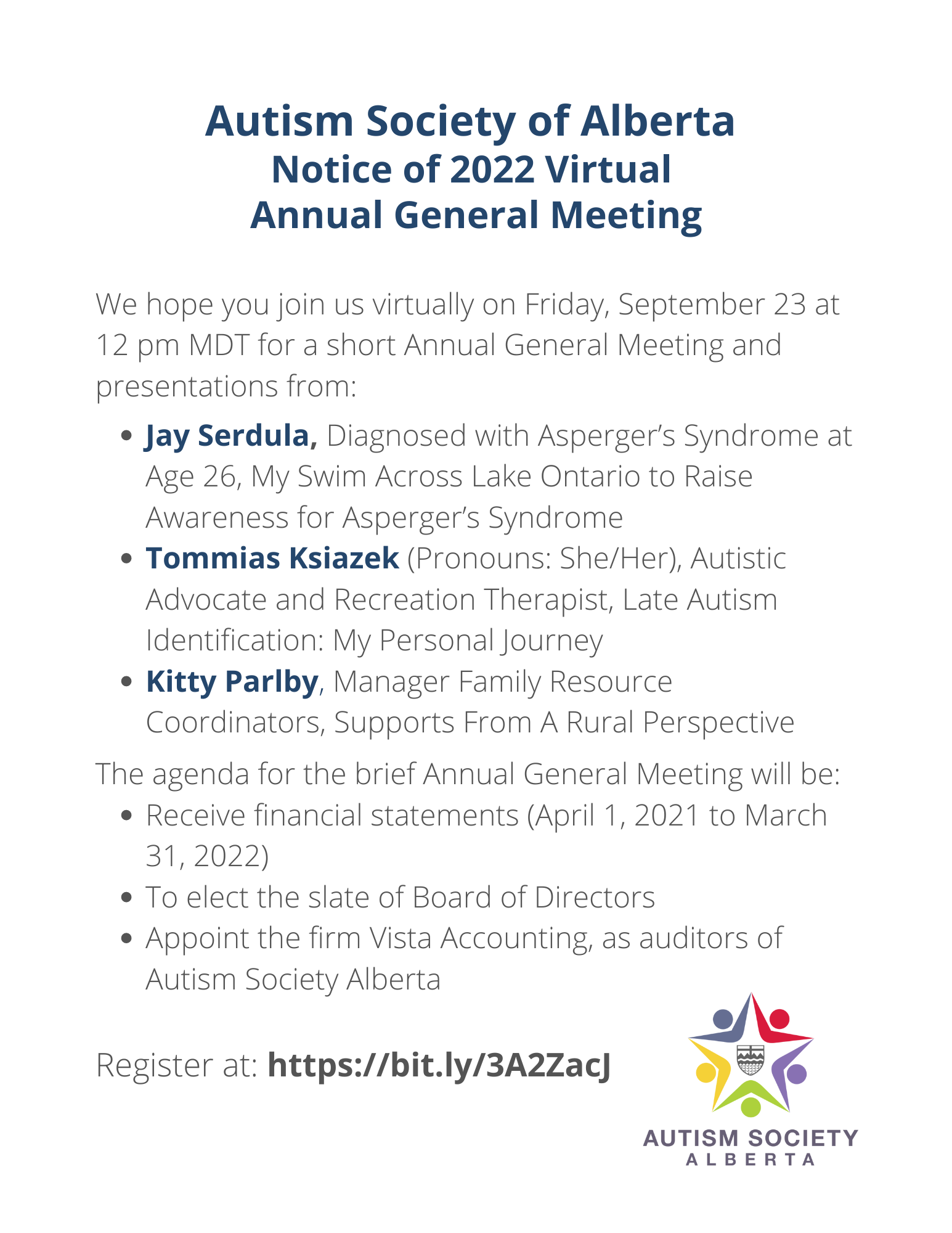
|
|
|
A New Discovery
Brandon Rudics
It has been a while since I have contributed an article to this fantastic newsletter, but over the last few months, I made a new discovery that has really changed my life for the better. I would love to share it with this community.
I have recently tried the practice of a daily meditation routine, and the results have been nothing short of amazing for me. I decided to give this a try after reading a few articles about meditation, and hearing from some personal friends about how it has helped them in their daily lives.

There are many different ways to meditate. I like to use a guided meditation app on my phone. I find the guided meditations much easier, as my ADHD tends to have my brain going from thought to thought at lightning speeds. It allows me to focus my thoughts on my breathing, which is the whole point of meditating. I find a quiet, comfortable spot, put my earbuds in, and spend the next 9-12 minutes doing the guided meditations. After 30 some-odd days of doing this practice every single day, these are some of my observations.
- Sleep: I do my meditation before bed every day, as I am not a morning person. I can certainly say that starting this daily practice has helped me with my sleep. Falling asleep and staying asleep have been much easier for me since I started this journey. And the quality of my sleep has changed for the better as well. I have always been an active dreamer, even remembering dreams from my childhood. This discovery has allowed me to dream longer, and easier, if that makes sense. I could honestly write a whole article regarding just my dreams and the different storylines I’ve been dreaming about since I was a small child, but that’s for a different day.
- Daily life: My favourite part about this journey has been the little changes I have noticed in my daily life. One of those changes is using different
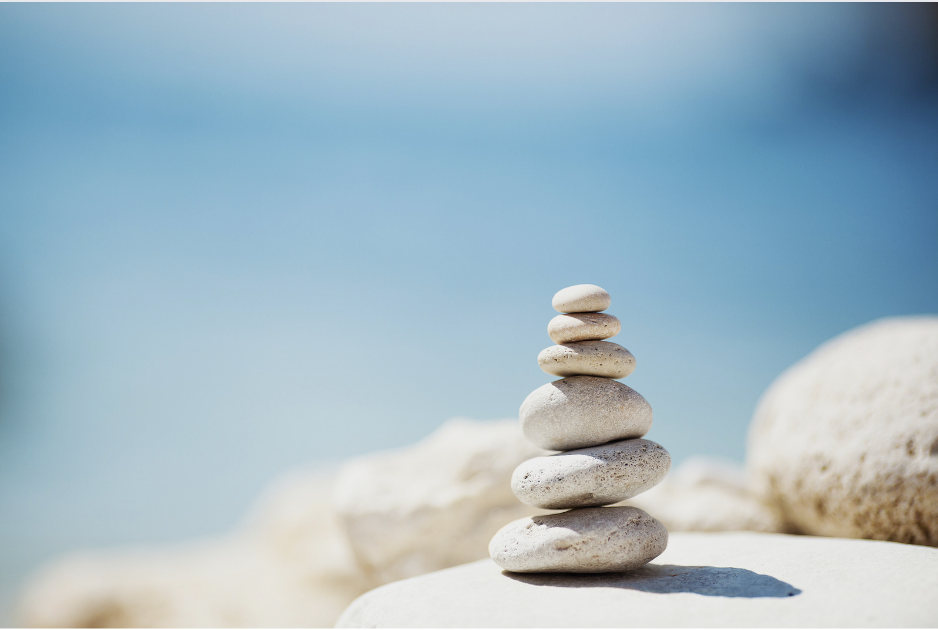 meditation breathing techniques, either before or during an anxiety attack. After just a few breaths, my anxiety is almost gone every time. Once I feel that anxiety creeping up my spine, I start taking a few deep breaths, focusing on the clean air entering my body, and then take a slow exhale, imagining I am exhaling my anxiety. This has been a huge discovery in my life, and has helped me in multiple situations already. After only 30 days! There are more things in my daily life that meditation has helped with, but for the sake of brevity, it would be best to share more with you all at another time. meditation breathing techniques, either before or during an anxiety attack. After just a few breaths, my anxiety is almost gone every time. Once I feel that anxiety creeping up my spine, I start taking a few deep breaths, focusing on the clean air entering my body, and then take a slow exhale, imagining I am exhaling my anxiety. This has been a huge discovery in my life, and has helped me in multiple situations already. After only 30 days! There are more things in my daily life that meditation has helped with, but for the sake of brevity, it would be best to share more with you all at another time.
- Getting started: I want to say that it took a good few days to fall into the routine of daily meditation practice. I remember thinking after my very first session, that maybe meditation wasn’t for me. I couldn’t control my mind easily, and felt I was just too distracted in life to meditate. I wanted to give this a fair chance
 though, so I kept going. After my 2nd session, it got a little easier to control my breathing and find a distraction-free area in my mind that I can go to. By the 3rd session, things got so much easier. I started feeling the benefits on this day, by falling asleep more easily, and feeling rested and ready to take on the day the following morning. After my 4th session, I fell right into the routine of daily meditation before bed. My body knows when it’s time to put in my earbuds, and drift off to a state of peace and serenity in my mind. It took 4 good sessions for me to realize the benefits of this discovery, and now, 30 days later, I can’t even fathom going to bed without my 9-12 minute meditation session. though, so I kept going. After my 2nd session, it got a little easier to control my breathing and find a distraction-free area in my mind that I can go to. By the 3rd session, things got so much easier. I started feeling the benefits on this day, by falling asleep more easily, and feeling rested and ready to take on the day the following morning. After my 4th session, I fell right into the routine of daily meditation before bed. My body knows when it’s time to put in my earbuds, and drift off to a state of peace and serenity in my mind. It took 4 good sessions for me to realize the benefits of this discovery, and now, 30 days later, I can’t even fathom going to bed without my 9-12 minute meditation session.
Now I am not writing this article to try to sell you or anyone else on the benefits of meditation. I am simply writing to tell the world how meditation has helped this autistic, ADHD, husband and father, in his daily life. It is exciting for me to find something this amazing for myself, and I just had to write this article to shout out this amazing new discovery from the rooftops. If you would like to hear more, or just chat about this subject, please feel free to contact me anytime. My contact information is located on our website under Family Resource Centres, and I am in the Lethbridge location.
I would like to thank everyone who took the time to read this, and I hope all of you had a fantastic summer!
|
|
|
Sinneave Family Foundation

Autistic Adult Community Needs and Priorities Survey – Open Now!
We want input from as many autistic youths and adults as possible. Please participate in this short, easy, anonymous survey. It should only take 5-10 minutes to complete.
SURVEY PURPOSE
- This survey is seeking information from autistic teens and adults to help the Sinneave Family Foundation (Sinneave) identify community needs and priorities.
- Survey questions are about potential social connection, learning, and mentorship opportunities, because previous focus group participants identified these as areas of interest and priorities.
- Responses to the survey will help Sinneave plan our activities, programs, services, and advocacy in 2023 and beyond.
We sincerely appreciate your time and input.

TAKE THE SURVEY NOW!
If you have questions or would like more information please email community@sinneavefoundation.org
A little bit about The Sinneave Family Foundation:
Sinneave works with individuals, communities, and organizations to improve education, employment, and housing outcomes for autistic youth and adults, with a vision that they thrive in their communities and realize their desired futures. If you have questions or would like more information about The Sinneave Family Foundation, please email info@sinneavefoundation.org
|
|
|
The 24 Day Journey
Frank Power
My family and I are flying home on the soon-to-be last leg of the journey that was our summer vacation. When everything is complete, we will have taken 6 flights, stayed in 3 different towns, and trekked to two provinces. Include a one-night stay in a hotel and it has been quite a journey. On top of this, the weather was amazing. There were some clothes I never touched during the trip.
The boys got to see family, in some cases for the first time. People got to watch our boys doing things they enjoyed, such as going to a beach, a playground, and a spray park. There was a love of the ocean, ice cream, toutons, Terry Fox, and homemade bread. The memories we made with our family are ones that will always be cherished. spray park. There was a love of the ocean, ice cream, toutons, Terry Fox, and homemade bread. The memories we made with our family are ones that will always be cherished.
With our boys, things always had to be planned, and we had to have a backup plan. Every place they stayed wasn't their home, but I felt they adjusted well. Our families got to experience our daily grind, and view all the love and effort we put into raising them both. They saw how we supported one another, and how one parent was able to pick up the other. Everyone got to see how our boys reacted to meals, sleeping, and how you always had to keep your eyes moving to know where they were.
I also appreciate how people were able to see us. Taking time to see us, even if the 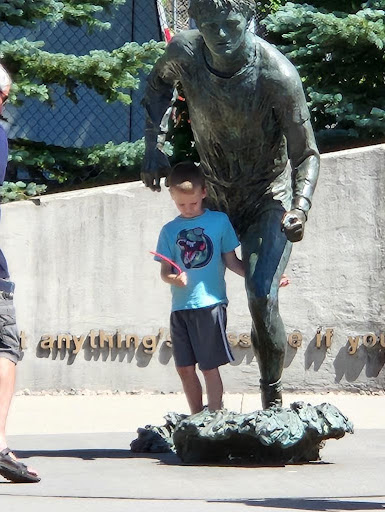 visit was a short one, was appreciated. Walking around with us and chatting when it became obvious it was hard to stay in one spot. You showed an understanding of what we do every day, by helping us modify a situation to make things work. This reduced our stress level, as we knew time was sometimes short and wanted to make the most of what we had. visit was a short one, was appreciated. Walking around with us and chatting when it became obvious it was hard to stay in one spot. You showed an understanding of what we do every day, by helping us modify a situation to make things work. This reduced our stress level, as we knew time was sometimes short and wanted to make the most of what we had.
I will look back at the pictures and videos with fond memories. Karla and I got to show our boys some parts of our childhood. We got to share and experience our boys’ joy and amazement through their laughter, smiles, and sometimes meltdowns when it was time to go. Through it all, I am glad we got to do this.
Most of all is the bond I have with my wife. Through every change and setback, we always had the support of one another. We never got much time to ourselves, and I am fine with that. When possible, one would stay with the boys so the other could get a few hours to themselves. We needed this trip for so many reasons, I can't even list them all.
With that being said, I am looking forward to seeing our house, sleeping in our own beds, and hanging out with our dog Chip. It will be good to be home with our au-mazing family, and to relax from our vacation.
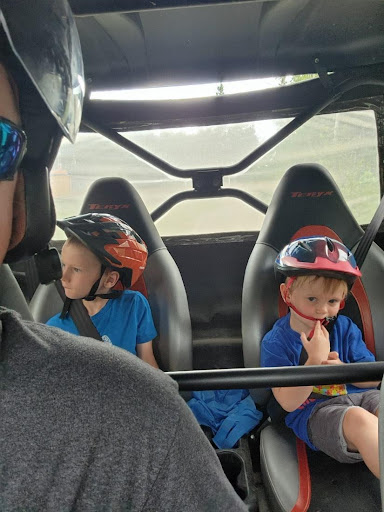 
|
|
|
Centre for Autism Services Alberta

Happy Fall from the Centre for Autism Services Alberta!
The Centre has some great offerings for autumn!
Thinking about getting a job? EmploymentWorks offers employment readiness training, job sampling, and work experience opportunities for individuals with a disability, including but not limited to autism! To inquire and to register, send us an email at employmentworks@centreforautismab.ca. Start your job search today!
We are accepting applications for Facing Your Fears for September 2022. This program is for ages 8-14 and is designed for children on the autism spectrum who are having difficulties managing their anxiety. A well-developed caregiver education component is part of the program, allowing strategies learned in groups to be implemented at home.
- This 13-week program consists of 90-minute sessions, once per week
- Focuses on helping children and their caregivers identify worries, develop coping strategies, and practice managing anxiety with guidance from program facilitators
- Caregiver participation is required
- Delivered by a registered psychologist and occupational therapist
- Funding may be provided by FSCD
For more information and to apply, please contact Anne Beattie at 780-488-6600 ext. 314, or email abeattie@centreforautismab.ca.
|
|
|
Our Hands Are Full, But So Are Our Hearts
Karla Power
After taking a vacation for 3 weeks with the kids, this mama needs a vacation! We went to 2 provinces, flew on 6 planes, and visited tons of people! Memories were made and adventures were had, but now we are exhausted!
When they are out of their comfort zone, you have to work extra hard to help regulate your kids. After just a day at my parent’s house, it was clear that Paddy was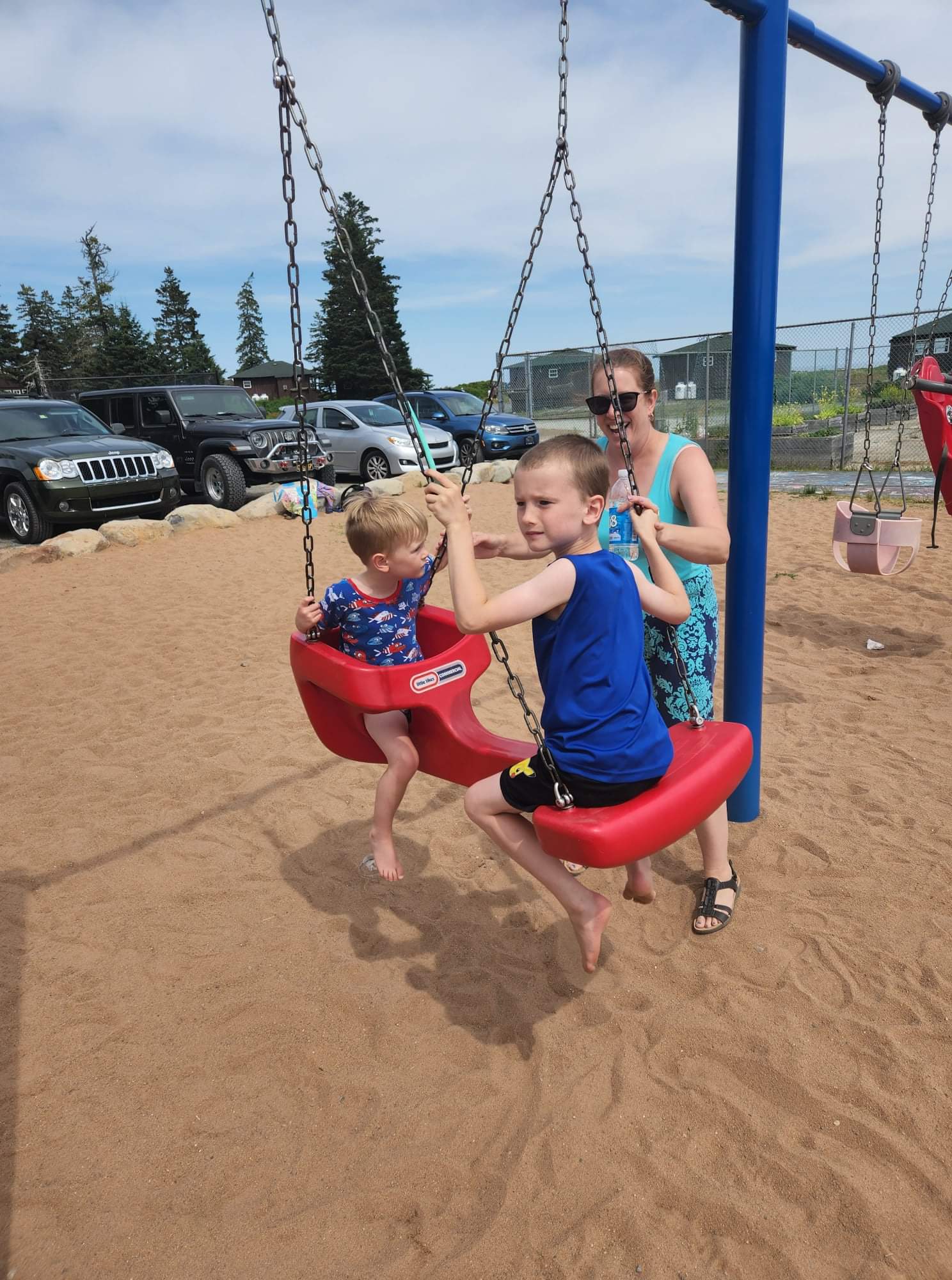 missing his trapeze, swing, and climbing structures. He was hanging off furniture and climbing, in an attempt to get that pent-up energy out. Meanwhile, Kelton was jumping on everything, as he was missing his trampoline time. Trying to keep on top of the boys was stressful, to say the least! They were also given way too much screen time, in an attempt to keep them happy. missing his trapeze, swing, and climbing structures. He was hanging off furniture and climbing, in an attempt to get that pent-up energy out. Meanwhile, Kelton was jumping on everything, as he was missing his trampoline time. Trying to keep on top of the boys was stressful, to say the least! They were also given way too much screen time, in an attempt to keep them happy.
Luckily, the weather was great for the 3 weeks, so we were able to do lots of trips to the beach, lake, parks, and spray parks to help get their energy out. We kept the boys pretty busy going on adventures during the day, so that we could have some hope of getting them to sleep each night.
Most of our visits with friends and family involved some sort of activity that the boys 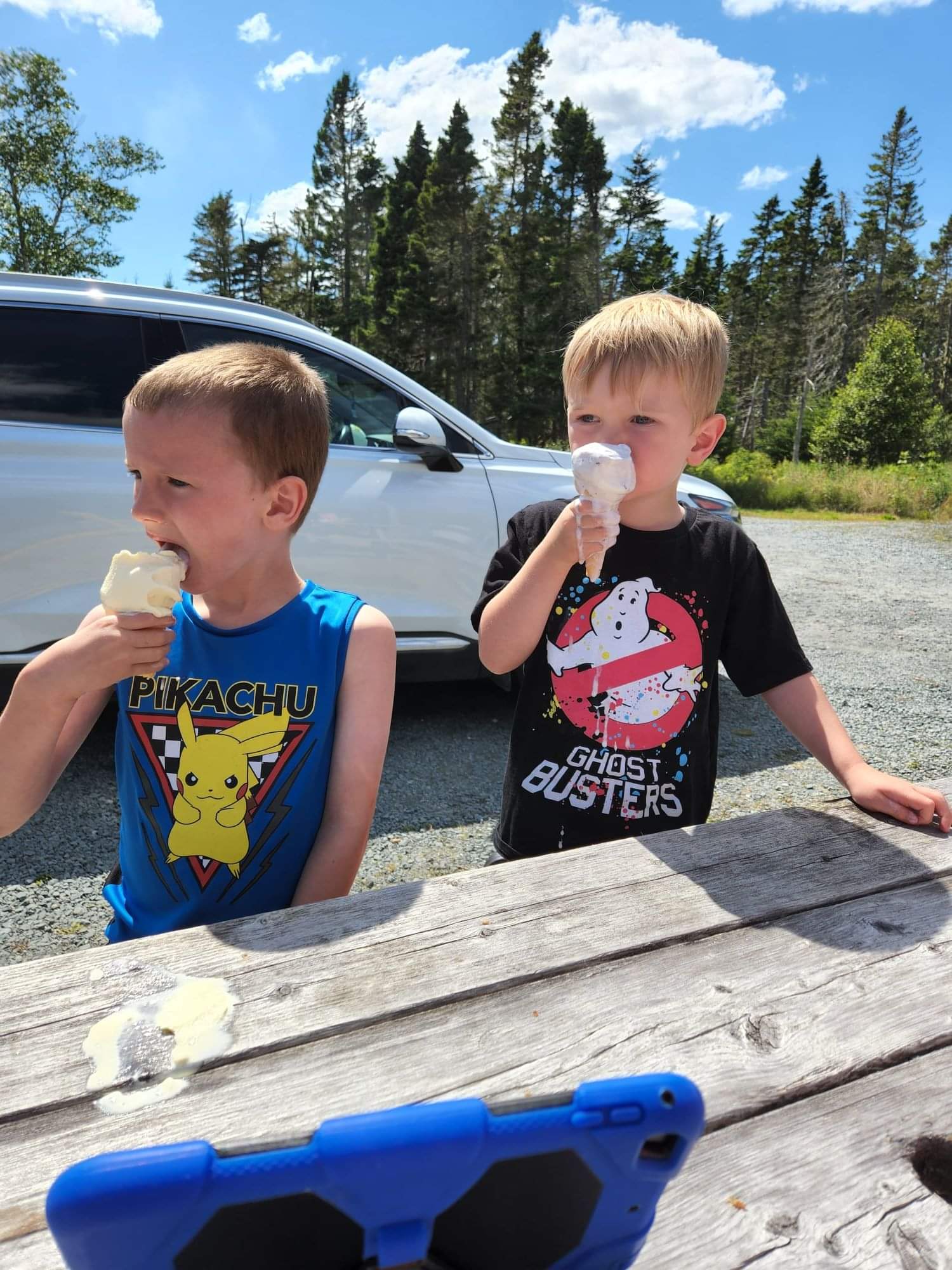 enjoyed, in which they could be active. We appreciated everyone being so accommodating and participating in these short but sweet visits with us and the boys. Many people realized quickly that in order to visit with us, they had to move around with us, as our eyes have to be on the boys at all times, and we can only be an arm’s length away, for safety reasons. enjoyed, in which they could be active. We appreciated everyone being so accommodating and participating in these short but sweet visits with us and the boys. Many people realized quickly that in order to visit with us, they had to move around with us, as our eyes have to be on the boys at all times, and we can only be an arm’s length away, for safety reasons.
We wish we would have been able to sit down and give people our undivided attention, but that is not our reality. It was great for people to get a glimpse of our real life though, and to see the boys doing something that they both love: being active!
One common theme from our trip was people acknowledging how busy the boys are and how full our hands are. Most people expressed how much they had learned, and some even gave us props for doing a great job with the boys. I would be lying if I said I didn’t appreciate the validation from others. We never planned on having 2 children with extraordinary needs, yet here we are, doing the best we can in some unfamiliar places, and still making the effort to visit the people we love.
As I explained to my parents, we have good days, but not easy days. I am very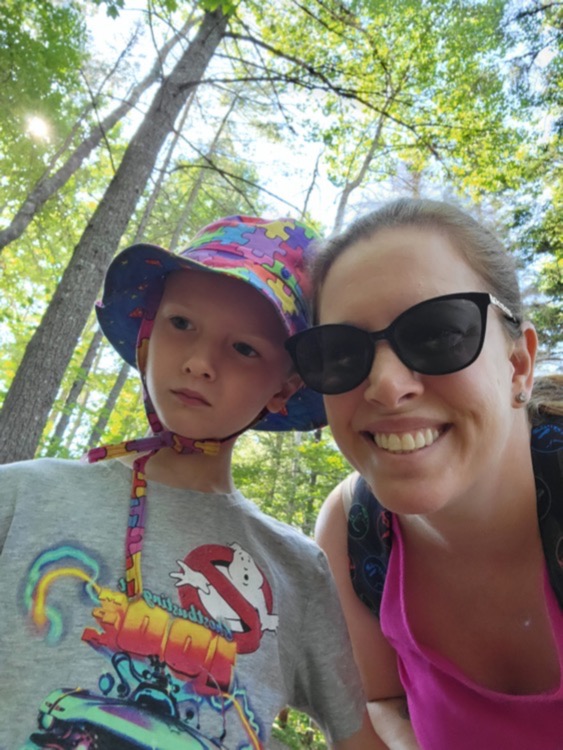 fortunate to have a husband who is a great dad and partner! We are a team, and although our hands are full, it’s important to acknowledge that our hearts are full as well! fortunate to have a husband who is a great dad and partner! We are a team, and although our hands are full, it’s important to acknowledge that our hearts are full as well!
It can sometimes be so easy to focus on the hard: the meltdowns, picky eating, behaviours, sleepless nights, and big feelings; but then we miss out on celebrating all of the wonderful things about the boys and how far they have come. Like the fact that they made connections with lots of people, even without saying a word. Both boys showed affection to their grandparents, through smiles, hugs, and elbow squeezes.
Overall, our trip was a great experience! We found joy in watching our kids experience new things like chasing waves, swimming with cousins, and trying blueberry ice cream. Our hearts and bellies have been filled! We will continue to travel and make adjustments along the way as the boys get older. We will try to teach our family and friends more about the boys, as love and acceptance begin with understanding. For now, please know that yes, our hands are full, but so are our hearts!
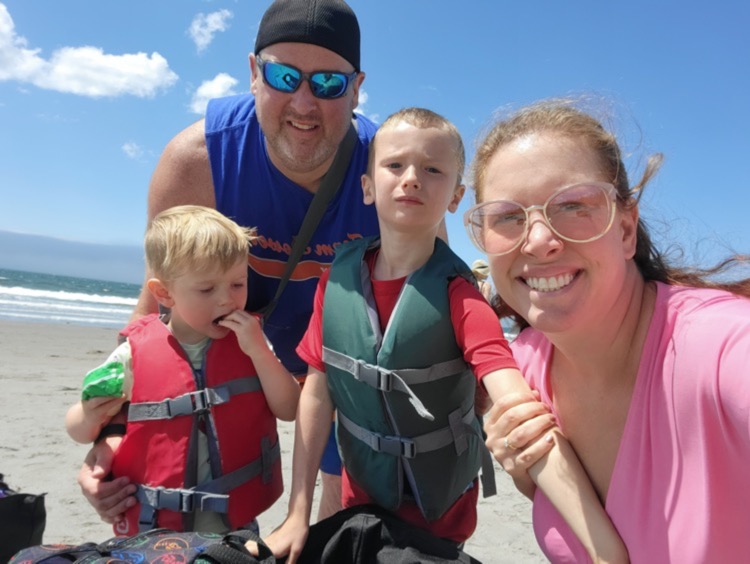
|
|
|
Supporting Autistic Students in the Classroom
Maureen Bennie

From the Autism Awareness Centre Inc. Blog
Teaching an autistic child can be both rewarding and challenging at times. If this is your first time teaching an autistic person, it can feel overwhelming to figure out what to do, or how to best support that child to set the stage for optimal learning. Educators must teach to children’s strengths, create a predictable environment, and be aware of sensory needs. Luckily, there are lots of resources out there to educate and guide teachers to help make a child’s school experience a good one.
It is important to understand that an educator’s role is to guide the child, and not try to change who that child is. None of us can predict the future outcomes for a child, or what they may achieve later in life. Good teaching fosters growth and development, paving the way for a child to reach their full potential.
What are the learning strengths of autistic children?
Visual Learners – Autistic children are visual learners. Auditory processing tends to be weaker. Visual information is fixed, permanent, and predictable. The spoken word disappears and is forgotten, and a child may be still processing the first sentence while the third one is being said. Use visual supports to increase understanding, foster autonomy, and provide stability.
Memory – Memory can be more for facts and details than the sequencing or recall of an event, but it is great for rote learning such as times tables or simple addition facts, or rules.
Detail Focused – Attention to detail can transfer into in-depth knowledge that goes way beyond the curriculum. Be sure to use this knowledge around an area of interest for the student, for any aspect of the curriculum such as writing topics,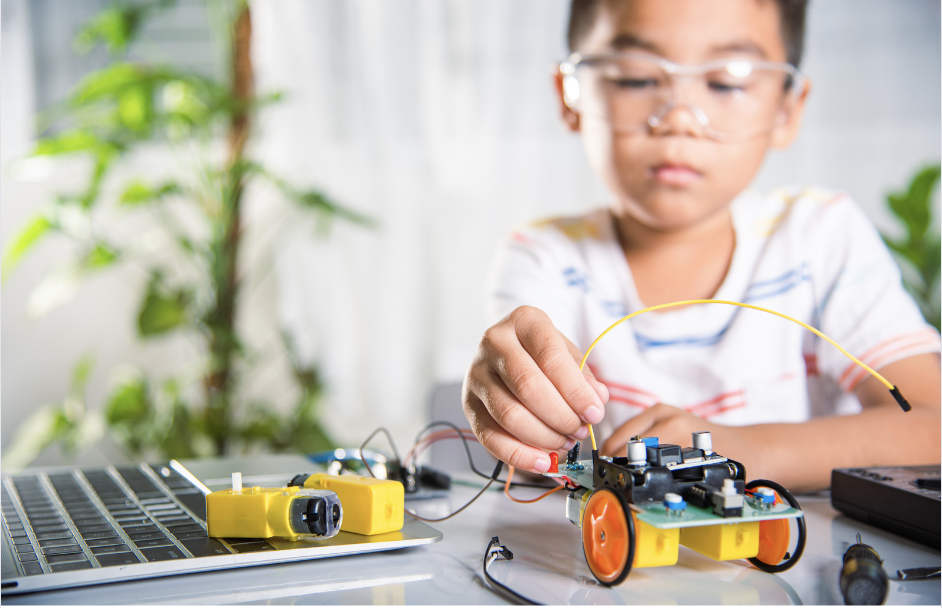 research, book reports, etc. research, book reports, etc.
Kinesthetic Learners – Most children learn by doing. They need to interact with their environment and learn about the world by involving their senses. Be wary of using too much technology, especially with young children who need to get firsthand experience.
Teach to these strengths! Remember – it’s easier for us to adapt to the child rather than the child adapting to us. This is why it’s important to have many tools and teaching strategies at your fingertips, so that you can be flexible with delivery and be able to change course quickly.
The Importance of Predictability
Having a predictable environment and day is important because predictability:
- lessens anxiety
- reduces fear over change
- helps with transitions
- gives a clear beginning, middle, and end to an event/activity
- supports autonomy
- supports communication by increasing initiation and interaction
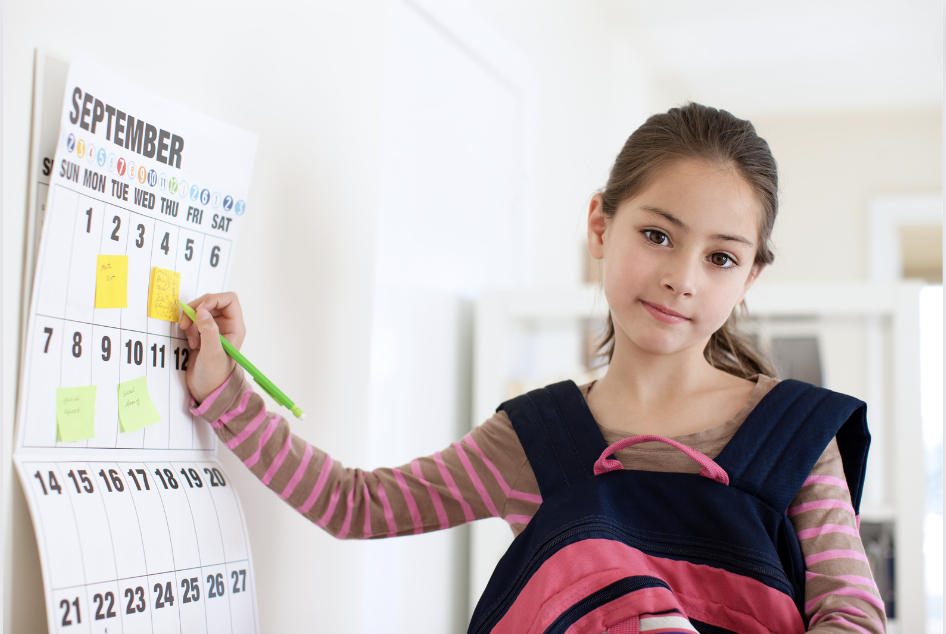
A predictable classroom has a structured physical environment, and uses visual supports, established routines, and structured activities.
Why is a structured environment needed?
Establishing visual cues and schedules within the classroom will help children make transitions, with a minimum of behaviours of concern occurring. Autistic children will have difficulty making independent transitions to new activities, due to their lack of understanding of nonverbal cues, and anxiety around any new situation. Attention and sensory needs will impact the ability to focus on the main speaker in the classroom, due to distractions. They will struggle to isolate relevant and meaningful information from classroom activities and materials, from everything else that is going on around them.
What does the physical environment look like?
The well-organized classroom has:
- predictability and stability through routines and visual supports
- defined areas of appropriate size for an activity
- clear cues to children and staff about expectations for the area
- allows for supervision
- areas that support targeted skills for scheduled activities
- areas that limit distraction and help with focus
- an environment that increases engagement and prevents challenging behaviour
- support for independence through routines and everyday activities
- defined workspaces
There should also be areas for:
- one-to-one instruction
- small groups
- independent work
- full group instruction
- transition – which can be for switching tasks but remaining in the same area, or switching between areas in the room
- cool down or sensory space that should never be used for time-outs, punishment, or seclusion
- the teacher
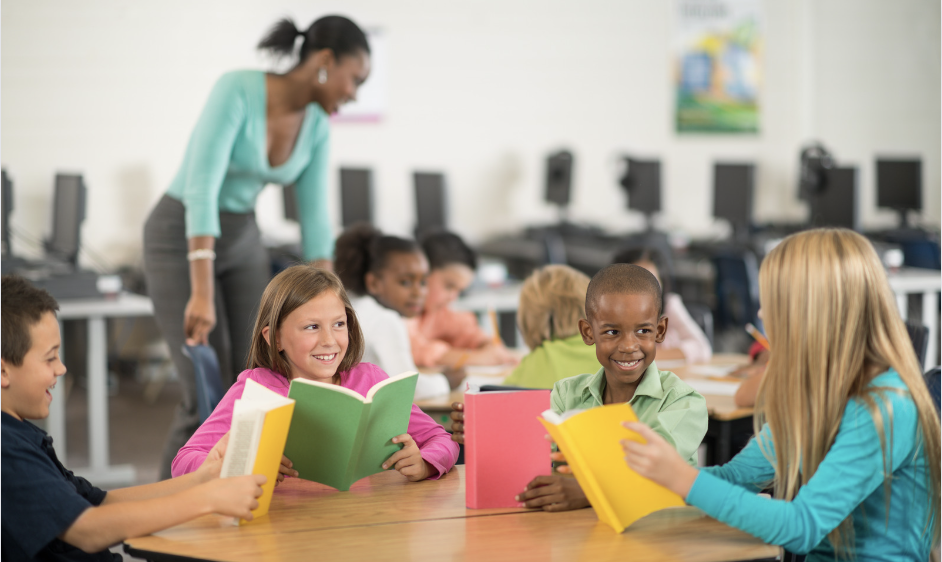
Why are visual supports so important?
- Autistic children tend to be visual learners, so visuals support their strengths.
- They create predictability, which lessens anxiety.
- They improve understanding.
- Visuals provide structure and routine.
- They build confidence.
- Opportunities for interaction are provided.
- Adults communicate more clearly when they are using visual supports.
Types of Visual Supports
Visual supports can take many forms. You may have to try several different types to figure out which ones a child prefers and understands best. Some examples of visual supports are:
- tactile symbols/objects of reference – Ex. a book means story time; a ball means time for outdoor play, etc.

- photographs – so easy to produce in the digital age
- short videos
- miniatures of real objects
- coloured pictures
- line drawings
- symbols
- written words – I always recommend putting text with picture visuals. My autistic daughter could read at age 4 before she could speak.
Use visual supports for:
- making choices – start by teaching this concept with a preferred and non-preferred activity so the child starts to understand they are making a choice
- first/then – Ex. First, we clean up/ Then we go outside. First/then can also be motivational.
- single messages – going to the toilet, play outside, snack time
- timetable, schedules, sequences of activities
- task breakdown – The individual steps for a task such as washing hands, and dressing for outdoors. This supports recognizing relationships between steps of an activity.
- to show units of time – 1 minute, 2 minutes, 5 minutes
Understanding Time
Understanding units of time will lead to better time management. I won’t go in-depth 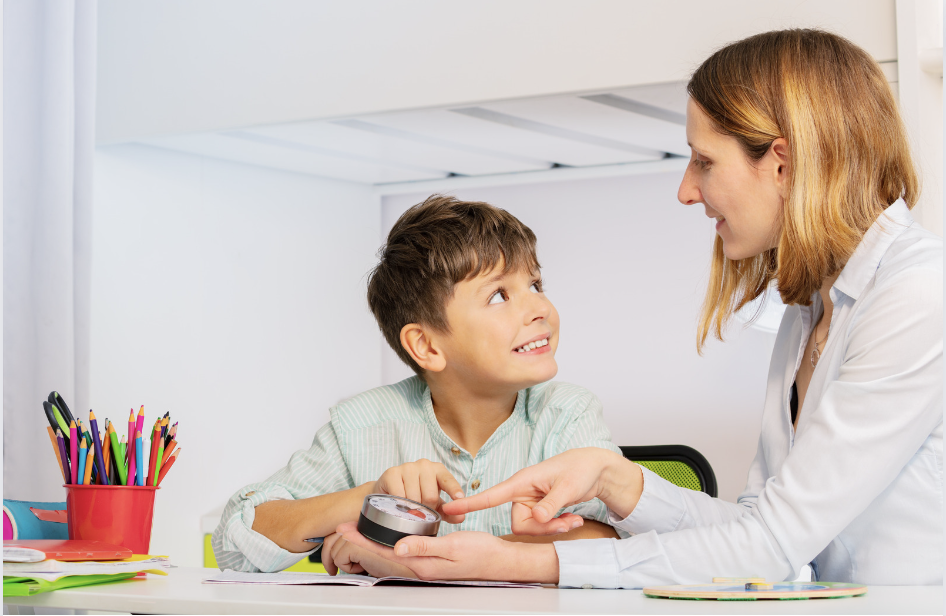 on this topic because I wrote an article about this called Teaching the Concept of Time. Time management is an executive function skill. Children need to learn how long tasks take to do to manage their day-to-day needs, which will help them as they mature and become more independent. Anxiety will also be reduced when it is clear when a task is starting and when it will end. on this topic because I wrote an article about this called Teaching the Concept of Time. Time management is an executive function skill. Children need to learn how long tasks take to do to manage their day-to-day needs, which will help them as they mature and become more independent. Anxiety will also be reduced when it is clear when a task is starting and when it will end.
Supporting Sensory Needs
Every individual has their own sensory profile. Autistic children experience challenges in processing sensory information from their own bodies and from the environment. Paula Aquilla, an occupational therapist, says, “The key to understanding a person’s response to sensation or their need to seek out sensation is to observe with an open mind and without judgement. We can all become detectives to determine possible underlying reasons for a child’s response to the sensation we present when we want to interact.”
To understand a child’s sensory needs, we need to observe them in action and follow a sensory checklist to create a profile. This profile can then be used to create a sensory diet. A sensory diet, first created by occupational therapists Wilbarger and Wilbarger (1991), is an individualized plan of physical activities and accommodations, to help a person meet their sensory needs. This plan provides the sensory input needed to stay focused and organized throughout the day. For example, some people may feel overwhelmed or overloaded and need to get to a calmer state; some may feel lethargic or sluggish and need some activities to feel alert.
The main goal of a sensory diet is to prevent sensory and emotional overload, by meeting the nervous system’s sensory needs; however, it can also be used as a recovery technique. Understanding a child’s sensory profile and the activities which create calmness and regulation can really help when a child feels overwhelmed and out of control. Engaging children in sensory experiences on a regular schedule can support focus, attentiveness and interaction. Children may feel less anxious when they feel comfortable and in control.
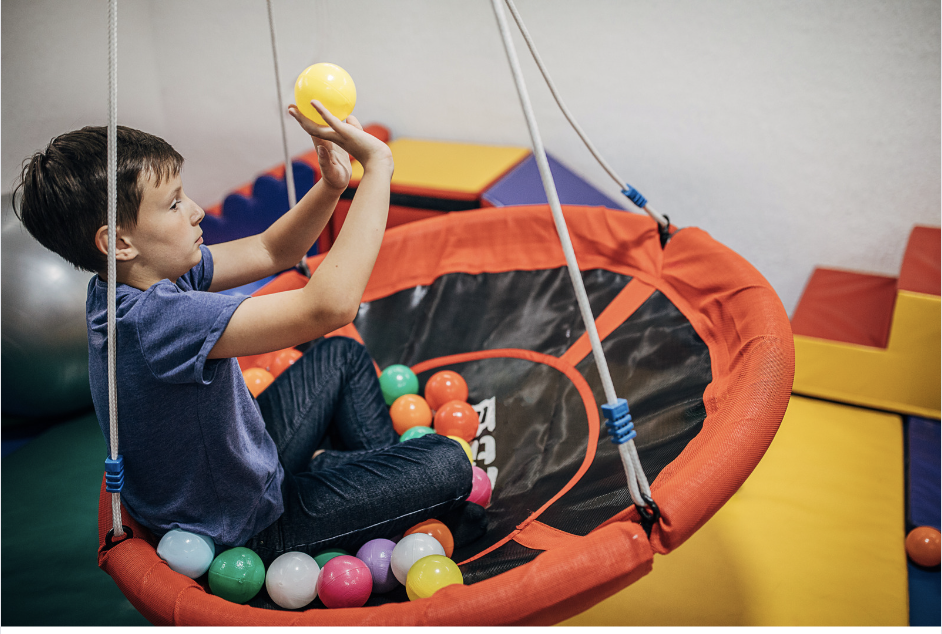
Incorporate Interests Into the School Day
Incorporating a child’s interests into the school day supports happiness and well-being, provides enjoyment and motivation, and adds meaning to activities and the curriculum. Interests can also be expanded upon to increase knowledge and learn new skills. I have written a couple of blog posts on the importance of interests and how to use them in different aspects of the curriculum.
The school community plays a big role in a child’s life. If an autistic child’s learning strengths and needs are supported and accommodated, the outcome is a strong one. Education is the springboard for lifelong learning and enjoyment. The classroom experience should be a positive one, and it can be with a structured physical environment, work systems, and clear visual supports.
Have a great school year!
|
|
|
Autism Edmonton's
Opening Doors for Autism Gala
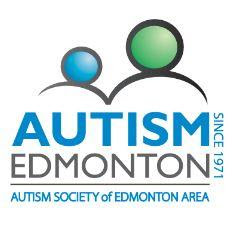
Our biggest fundraiser of the year is happening on October 21st, 2022! You can already purchase tickets here. Save the date for this one-of-a-kind evening to support Autism Edmonton!

|
|
|
Meet ASA's Family Resource Coordinators
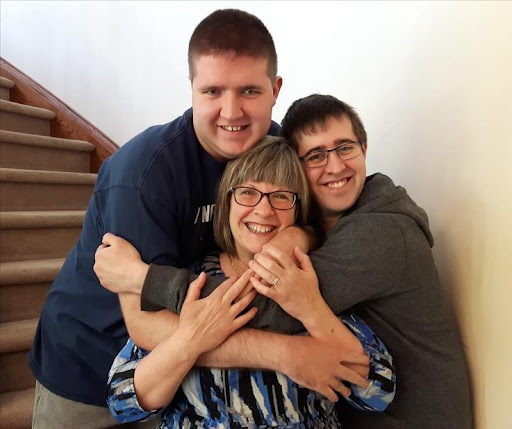
Hi there! My name is Kitty Parlby, and I am the manager of our Family Resource Coordinators. My husband Rick and I have two wonderful sons. Our older son Adam is 27, and recently graduated from university with a major in history and a minor in sociology. Our younger son Eric is autistic, and spends his weekdays in nearby communities with his aide doing work experience, recreation, art, and volunteer work. We live in rural Central Alberta, not far from Alix. I have been deeply involved with the autism community in Alberta for more than 20 years. My background is as a one-on-one special needs Educational Assistant, and as a speaker/consultant on autism. I am so happy and honoured to support our amazing team of FRCs, and the families and professionals who reach out to us!
Kitty can be reached at FRCAllAlberta@autismalberta.ca
|
|
|
|
|